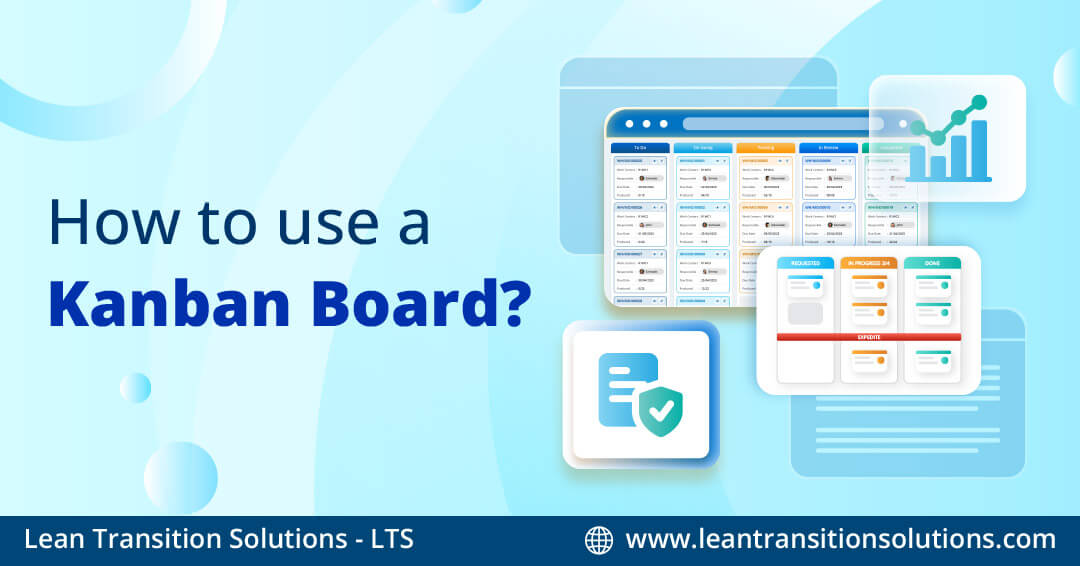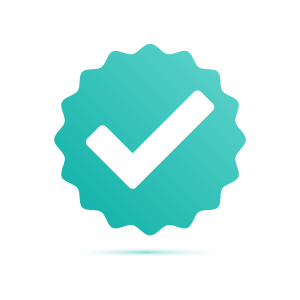How to use a Kanban Board?
February 16, 2024
Originating from the innovative mind of Taiichi Ohno within the Toyota automotive industry in Japan, the Kanban tool emerged as a simple yet powerful pull system aimed at controlling and improving work processes and inventory throughout production stages. The physical Kanban boards transited over time into a digital workflow management system that helps diverse industries worldwide.
From manufacturing to healthcare, hospitality to aerospace, the Kanban software has left an exceptional path, revolutionising workflow management across various sectors. Digital Kanban boards extend its application to pharmaceuticals, marine vessels, FMGC, and beyond.
Today, the versatility of Kanban systems extends beyond organisational settings. Team Kanban helps teams and individuals utilise Personal Kanban to manage their tasks seamlessly, eliminating the hustle associated with task management and ultimately improving productivity.
What are Kanban Boards?
Kanban boards are visual management systems used to manage tasks and workflows systematically while limiting Work-in-Progress (WIP). Typically, a Kanban board is divided into Kanban columns representing different stages of work, such as "To Do," "In Progress," and "Done", separated by Kanban swimlanes. Kanban boards enable teams to track the status of each task at a glance. Tasks are represented by Kanban cards that are moved across the Kanban board as they progress through the workflow. The Kanban flow enhances transparency, improves communication, and facilitates the identification of bottlenecks or improvement areas. With the flexibility to customise Kanban columns and add features like priority tags or deadlines, Kanban boards empower teams to streamline and enhance production processes efficiently.
Elements of Kanban Board
- Kanban Cards: Represent tasks or items on the Kanban board, containing details like description, priority, assigned employee and task status.
- Kanban Columns: Columns on the Kanban board representing different work stages, such as "To Do," "In Progress," and "Done” to establish a Kanban flow.
- Kanban Swimlanes: These are horizontal sections within a Kanban board that categorise tasks or activities based on criteria such as teams, projects, or priority levels.
- Work-in-Progress (WIP) Limits: Constraints placed on each column to prevent overloading and maintain focus, fostering efficient workflow.
- Commitment Point: Where new tasks enter the Kanban flow, ensuring clarity and agreement on what work will be undertaken.
- Delivery Point: Where completed tasks exit the Kanban flow, ensuring clear handoff and completion of work.
How do you use Kanban Boards effectively?
- Visualise the Workflow: Begin by mapping out your workflow stages, such as "To Do," "In Progress," and "Done," on the Kanban board. Ensure clarity and transparency in how work moves through different stages.
- Create Cards on the Kanban board: Populate the "To Do" column with tasks or items that need to be addressed. Each task should be represented by a Kanban card containing relevant details like task description, priority, deadline, assignee and any dependencies.
- Limit Work-in-Progress (WIP): Set WIP limits for each column to prevent overload and maintain focus. Limiting the number of tasks in progress at any given time helps streamline workflow and prevents bottlenecks.
- Prioritise and Update Task status: As work progresses, move the Kanban cards across the Kanban board from left to right, reflecting their current status. Update Kanban cards with any relevant information or changes as they move through different stages. Prioritise your tasks by colour-coding, labelling, or arranging them within the "To-Do" column.
- Archive the Completed Task: Once a task is completed, transfer it to the "Done" column. Over time, consider archiving or removing accomplished tasks from the board to maintain its cleanliness and focus.
- Update the Kanban Board regularly: Conduct regular reviews of the Kanban board with team members to track task progress, identify any work blockers, bottlenecks or delays, and reprioritise tasks as needed. This fosters continuous improvement and adaptation to changing priorities.
- Integrate Systems and Control Access: Connect with project management, process control and budget management tools for centralised data and smoother workflows. Regulate user permissions for data security within the Kanban board, promoting collaboration and workflow efficiency while protecting sensitive information.
- Encourage team Collaboration: Foster open communication and collaboration among team members by encouraging them to update task statuses, provide feedback, and assist each other in resolving issues or completing tasks.
- Establish a Feedback Loop: Collect insights from team members and stakeholders regarding the efficiency and effectiveness of the Kanban board. Utilise this feedback to drive improvements and enhancements.
Why use a Kanban Board?
Manufacturers uses Kanban boards as it offer several benefits like:
- Enhanced Visual Representation: Provides a clear and visual overview of tasks and workflow stages, enhancing transparency and understanding.
- Improved Workflow: Helps streamline processes, identify bottlenecks, and eliminate wasteful activities, improving efficiency.
- Flexibility and Adaptability: Allows quick task adjustments to changing priorities, enabling teams to respond quickly to new requirements or unexpected challenges.
- Enhanced Collaboration: Encourages open communication and team collaboration, fostering a shared responsibility and continuous improvement culture.
- Easy Work-in-Progress (WIP) Management: Sets limits on Work-in-Progress, preventing overload and ensuring focused efforts on completing tasks.
- Fosters Continuous Improvement: Facilitates regular reviews and iterations, enabling teams to identify improvement areas and implement changes for enhanced productivity and effectiveness.
Where should Kanban Boards be used?
Kanban boards are particularly useful in dynamic environments where priorities shift frequently, enabling teams to adapt quickly to changes, identify bottlenecks, and improve productivity. Kanban systems play a key role in project management, manufacturing processes, and daily tasks. Kanban boards provide a flexible and scalable solution for streamlining workflows and improving overall efficiency. Kanban's versatility applies to manufacturing, healthcare, pharmaceuticals, hospitality, energy, education, FMCG, HVAC, plant hire, and service sectors. Virtual Kanban boards are valuable for manufacturers prioritising a visual, flexible, and efficient approach to task management.
Kanban Training is essential!
Training sessions on "How to use Kanban?" make sense while implementing this visual management system for your organisation. Online Kanban board training ensures team members understand how to visualise workflows and manage tasks effectively. With a focus on key concepts like Work-in-Progress limits, visualising workflow stages, and continuous improvement, training your team helps you maximise productivity and improve processes. Proper training equips your team with the skills to navigate and utilise digital Kanban boards, fostering a culture of efficiency, transparency, and adaptability within your organisation.
Kanban Board Examples
Kanban Board Example in Project Management
Kanban stages: To-Do | In Progress | Testing | Done
If you are looking for a Kanban board example in project management, Kanban boards can track tasks from initiation to completion for various projects. Tasks such as project planning, design, development, and testing are represented as Kanban cards on the Kanban board. As team members work on various projects, Kanban cards move across columns, providing real-time visibility into progress. Upon completion, tasks transition to the "Done" column, allowing for efficient project tracking and management. The Kanban Swimlanes separate teams working on different projects. Kanban Columns can also provide visibility to subtasks upon which your teams are working. Kanban Boards can also indicate blocked tasks, awaiting the completion of another task, enhancing added advantage to Kanban flow.
Kanban Board Example for Planning and Execution
Kanban stages: Procurement | Manufacturing | Quality Assurance | Final Inspection
Let’s discuss a Kanban board example in planning and execution, a Kanban board serves as a visual management tool that enables teams to track and manage tasks efficiently. By dividing workflow into stages such as procurement, production, quality assurance, and final inspection, the Kanban system allows for the smooth progression of work items from initiation to completion. Each task is represented by a card that moves through the stages, providing real-time visibility into progress and bottlenecks. With its focus on visualisation and continuous improvement, the Kanban board enhances productivity, facilitates collaboration, and fosters agility in project management and execution.
Lean Kanban Board Example
Kanban Stages: Request | Analysis | Development | Testing | Deployment
Let's move on to a Lean Kanban Board example. The Lean Kanban methodology integrates Lean and Agile principles to streamline project workflow efficiently. Lean Kanban Boards emphasise continual improvement, enhanced project efficiency, and the elimination of barriers in product development. Implementing a Lean Kanban Board yields reduced planning cycles, heightened predictability, and diminished project risks by fostering shorter feedback loops and phased development. For instance, a software development team adopting a Lean Kanban Board prioritised backlogs of tasks and engaged in the repetition of processes for improvements to ensure incremental progress and adaptability.
So, we have discussed "What are Kanban boards, and why do many manufacturers use Kanban boards across the globe?" Manufacturers prioritising workflow management and process optimisation prefer digital Kanban boards as their saviour on the shop floor. Digital Kanban boards align seamlessly within different industries, facilitating real-time task tracking and data-driven decision-making. With the ability to integrate with other digital tools and systems, digital Kanban boards offer manufacturers enhanced visibility and control over their production processes.
Kanban software is a flexible solution to boost productivity and streamline operations across various scenarios. Adopting Kanban practices helps individuals and teams experience improved and streamlined production processes. Whether you are planning your master production schedules, conducting quality inspections, managing resources and assets or organising your personal to-do list, virtual Kanban boards adapt seamlessly to diverse needs and manage workflow efficiently.
